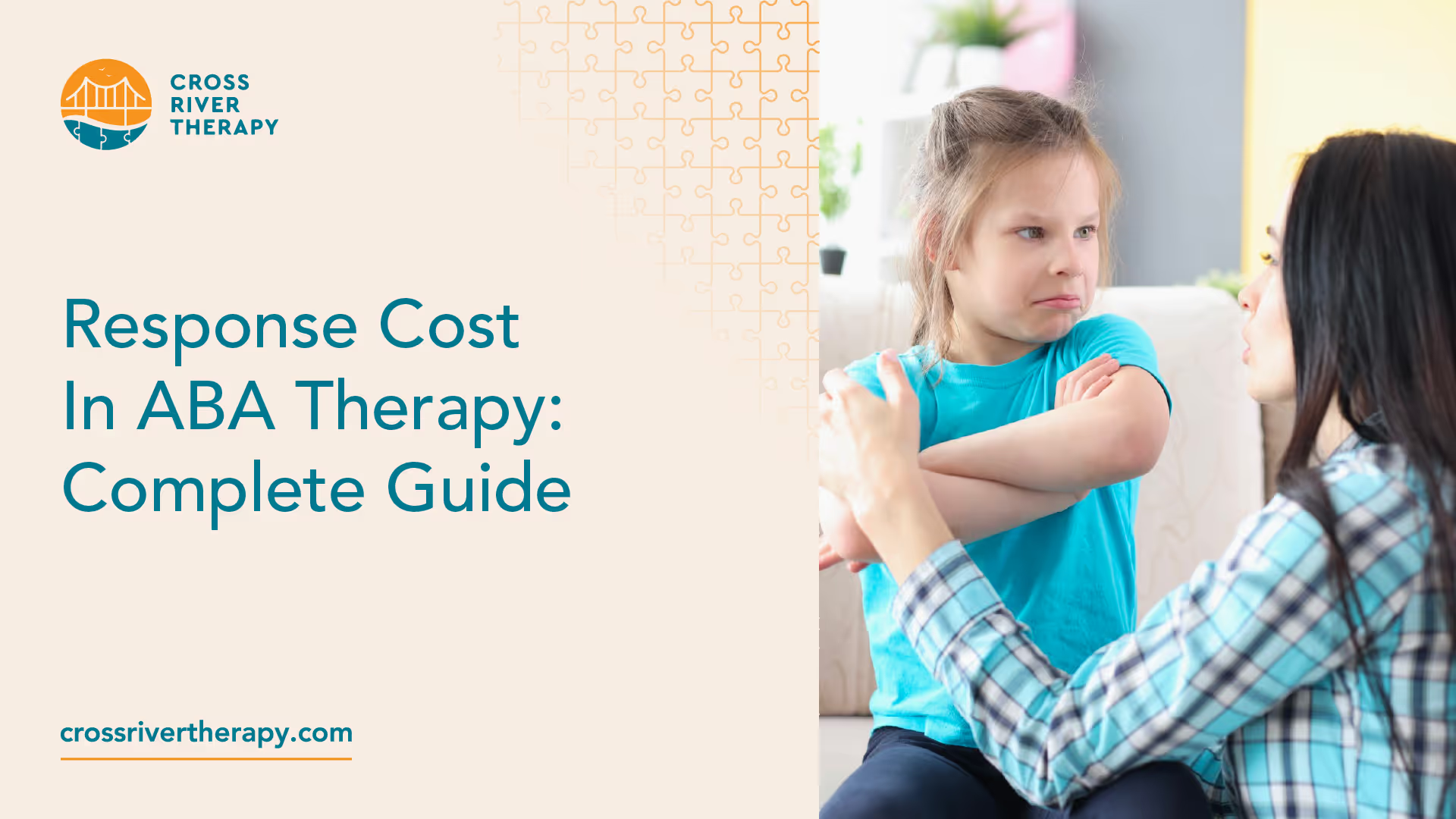Response Cost In ABA Therapy: Complete Guide
Response cost is a type of punishment procedure where wanted possessions are taken away.


Response Cost ABA Definition
Response cost is a type of punishment procedure where wanted possessions are taken away. This can include tokens, other physical items, or special privileges. There are steps for this related to the occurrence of the behavior, or the inability to carry out specific goals.
It's a term utilized for taking away reinforcement for behavior that is wholly disruptive or viewed as undesirable. Within ABA, it's a type of negative punishment.
Through the removal of something, such as an item that's preferred by a child, the likelihood of the behavior that is targeted happening again is reduced.
For this reason, it's usually used alongside a token economy, though best carried out when a child has a full understanding of what it implies. As such target behavior can occur again in this instance.
The practitioner can reinforce every response that's the correct one, or the one that they get right on the fourth or fifth time. This all depends on the schedule of reinforcement that's implemented. As such, teachers must routinely monitor the approaches they use in response to costs.
What is an example of response cost?
Examples of response costs are easy to find. Many already use them daily, often about many positive interventions without even knowing that they're doing so.
It can be thought of as a sort of fine that's given to someone as a response to another's display of poor behavior. From this, a price is reviewed for displaying certain behaviors deemed inappropriate.
In this case, if someone were to remove a piece of candy out of a child's gift basket due to something they said that was rude, the situation would be a typical response cost since it's carried out due to the child's response.
Another example of response costs is behavior management systems, one being a staircase.
From there is a list of different consequences with every step adding more punishments than the one prior. Every implemented penalty serves as a cost for the response of the student.
What is the difference between punishment and response cost?
The difference between punishment and response costs is that punishments encompass a broader range of decisions made in response to poor behavior in a child, whereas response costs are more regimented.
In this example are two procedures of punishment, with one being response cost and the other a standard timeout. It's used to find out how effective they are in lowering rates of compliance failures in a group setting, such as a classroom with special needs kids.
With response cost, tokens were taken away from the children based on their noncompliance with the commands given by their teachers. However, timeout resulted in kids being placed away from the entire group for 60 seconds for each instance of their failure to comply.
From this, response costs are deemed a useful way to reduce poor behavior, based on research.
Is response cost negative reinforcement?
Response cost differs from negative reinforcement by occurring when a stimulus is removed by way of a consequence of poor behavior. In other words, it's a negative punishment.
Negative reinforcement relates to the removal of a condition needed negative, usually to grow the behavior that's wanted This takes place through presenting or removing a stimulus for the reduction of a specific behavior.
Recent News
Related articles

Working With Autistic Children: 10 Career Options
Want to work with autistic children? Here are 10 career options for you to consider.

What Is The Age Limit For ABA Therapy In Indiana?
Find out what the age limit is for receiving Applied Behavior Analysis (ABA) therapy in Indiana.

What Is The Age Limit For ABA Therapy In Arizona?
Find out what the age limit is for receiving Applied Behavior Analysis (ABA) therapy in Arizona.

Verbal Operants In ABA: Definition & Examples
In Applied Behavior Analysis, verbal operants are a type of verbal behavior.

Token Economy: Examples & Applications in ABA
A token economy is a procedure that was developed to help reduce maladaptive behaviors and increased desire behaviors by providing a tangible conditioned reinforcer.

Trigger Analysis In ABA: Definition & Examples
Trigger analysis is a segment of ABA therapy where children are taught by therapists to pinpoint the behaviors and emotions that happen before, during, and after an event that takes place.

Variable Ratio Schedule & Examples
A variable-ratio schedule is a random reinforcement where responses are reinforced following varied responses afterward.

Task Analysis In ABA Therapy: Examples & Strategies
Task analysis is a process of teaching that divides complicated activities into sections involving easier steps for students to more easily take.

Stimulus Equivalence In ABA: Definition & Examples
Stimulus equivalence shows how relationships can manifest among different types of stimuli in different situations.

Speech Therapy For Autism: ABA vs. Speech Therapy
ABA therapy can help individuals with speech impairments learn to better identify and utilize the language skills they already have.

Stimulus Control Transfer ABA: Definition & Examples
Stimulus control is defined as an expression used to detail circumstances where a behavior is triggered by the existence or absence of a stimulus.

Social Validity In ABA: Definition & Examples
Social validity is the acceptance of interventions concerning behavioral changes.

